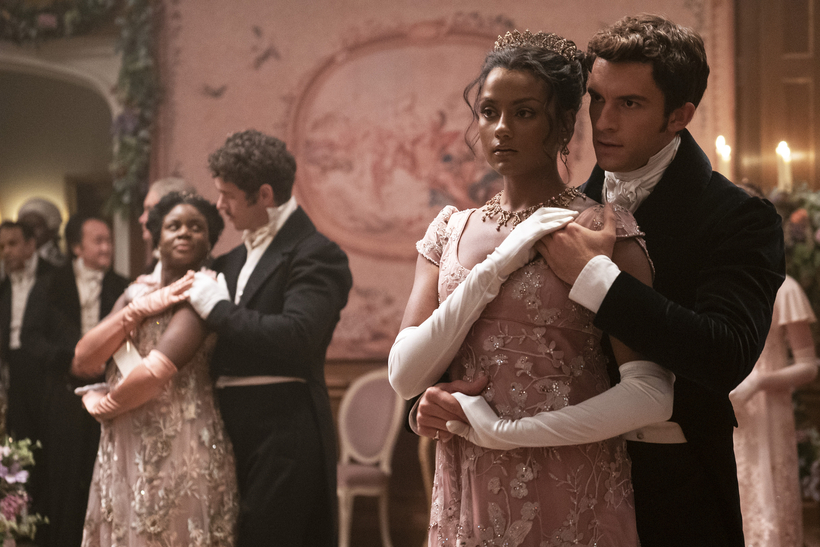One of my favorite moments in movies comes in The Sound of Music (1965), when the young postulant Maria is out on the patio teaching the not-so-simple Ländler—a precursor to the waltz—to one of the von Trapp boys. His widowed father, the Captain, replaces him in the dance, and suddenly, simply, we reach a turning point. A ball is going on indoors, and beyond Salzburg a war is gathering, but while dancing, these two are momently alone in the romanesque arches created by their arms overhead, hands clasped. They face each other in this tiny cathedral, their destiny prefigured. Dance goes where words cannot.
One of the greatest ballets of the 20th century was premiered five years earlier, in 1960, George Balanchine’s Liebeslieder Walzer. The setting is an at-home entertainment in a European drawing room. The music is Brahms, Op. 52 and 65. The couples are four: men in tails, women in ivory satin. A kaleidoscope of movement in 3/4 time, full of deep symmetry and stunning moments of asymmetry, the ballet offers up a seemingly endless cat’s cradle of arms and hands, invention flowering within formality. So much expressed by the turn of a head, the horizon of an arm, the placement of a hand, while waltzing.

There was dancing in the first season of the Shonda Rhimes hit series Bridgerton, but it is the second season, which dropped in late March, that takes storytelling further into movement. Indeed, the oppositional dynamic between the lordly Anthony, Viscount Bridgerton, and the rebellious Kathani “Kate” Sharma, is established from the get-go through tempo. He is riding home at dawn after a misspent night, his horse plodding behind two waddling geese (Larghissimo). She streaks by at full gallop, unchaperoned and free (Prestissimo). The romantic tropes and verbal sparring will roll out over eight episodes—prejudice and pride, duty versus desire—as old as the hills. It’s in the landscape of the dances that Season Two transcends.
The show’s choreographer, Jack Murphy, has focused on the allemande, which was described in the 1730s as “composed and likewise danced in a grave and ceremonious manner,” its 4/4 meter “delighting in order and calm.” Murphy has choreographed allemandes for Anthony and Kate in Episodes Four and Eight. Each dance is full of inward turns, back-to-back passes, stylized embraces, and hands that guide and glance. The two scroll in and away, their eye contact steady, intimacy distilled. Both dances are beautifully filmed. The first is like a maze they must move through. The second sees passion recalibrated as order and calm. As long as the dance continues they may gaze at each other uninterrupted, while we gaze at them.
Bridgerton, Season Two, is streaming on Netflix
Laura Jacobs is AIR MAIL’s Arts Intel Report Editor
